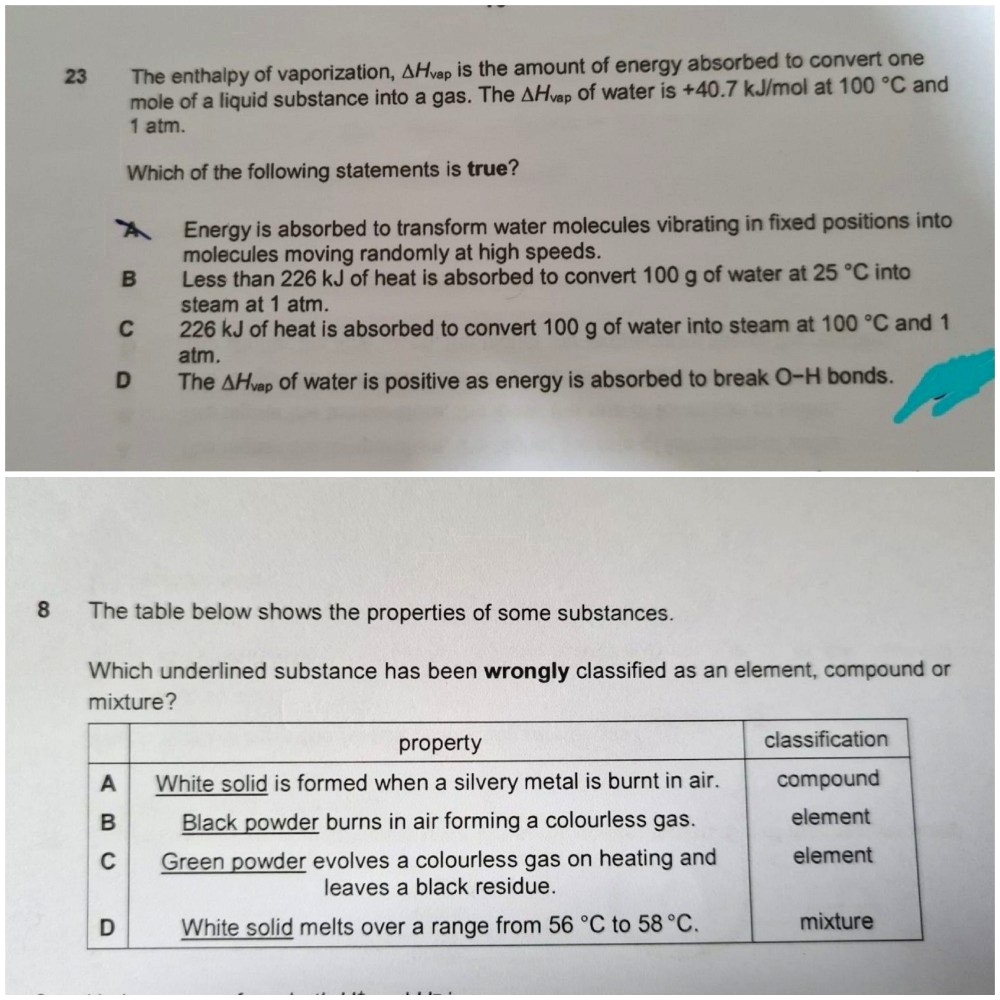Ask Singapore Homework?
Upload a photo of a Singapore homework and someone will email you the solution for free.

Question
secondary 3 | A Maths
One Answer Below
Anyone can contribute an answer, even non-tutors.

need help with this qn, pls explain too
(A) Likely true. A typical metal can react with oxygen in the air to form a metallic oxide which obviously contains two elements chemically combined together, so it should be a compound.
(B) Likely true as well, with a similar reason (except that the black solid might also be things like carbon.
(C) Not likely true. If the green powder is capable of evolving a colourless gas AND leaves a black residue, the powder must have contained more than one element inside it, so the green powder should be a compound or a mixture.
(D) Definitely true, descriptive of mixtures which melt over a range of temperature values.
So, your best bet is option (C).
We are trying to convert liquid water molecules into gaseous water molecules. One mole of water has a mass of 18 grams. So, it takes 40.7 kJ to convert 18 grams of water into gaseous water vapour, or approximately 226 kJ to convert 100 grams of water into gaseous water vapour, when conducted at 100 degrees Celsius at 1 atm.
(A) Not true, since the water starts out as liquid molecules which are definitely more "active" than simply vibrating in their fixed positions.
(B) Not true. You need 226 kJ to convert the water at 100 degrees Celsius into steam at 100 degrees Celsius, and of course you still have that extra energy required to bringing the water temperature up to 100 degrees Celsius in the first place.
(C) True, as explained above.
(D) Not true. In converting liquid water into gaseous water vapour, we are actually overcoming weak intermolecular forces rather than breaking the O-H bonds (if the bonds are broken, the water would have broken down into hydrogen and oxygen gases already).
So, our best bet is option (C).
for C does that mean if a powder or any other object gets heated and changes to another colour (like leaving a residue of another colour etc) it must be a compound or mixture?
(B) the solid can be anything, but usually it’s an element (some compounds can change colour too)
(C) It depends whether the heating involves oxygen (combustion) or not (decomposition)
You need energy for two things.
One, to bring the temperature of the water up from 25 deg C to 100 deg C.
Two, to convert the liquid water into gaseous steam or water vapour.
So, you need more energy than simply converting the water to steam, which explains why you need more than 226 kJ.
See 1 Answer




